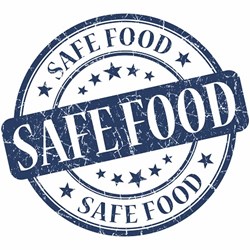The Food Safety Paradox
By Melissa Lind, contributing writer

New regulations, requirements, and standards have contributed to an increase in the number of food product recalls. On the surface, it appears that the food supply is rife with contamination; a single incident can become instant fodder for endless news reports. While major food-safety events, such as a recent Listeria outbreak from caramel apples that has now affected 11 states, are certainly a cause for concern, overall the food supply is, in fact, actually becoming more and more safe.
The Food Safety Modernization Act, drafted over the last several years, has required manufacturers and processors in the food industry to shift focus from reaction to prevention. The industry has also been tasked with the development of increased visibility and traceability in the food supply chain so that recalls can be communicated immediately and performed effectively with a minimum of risk to the public.
In the first half of last year, the FDA recorded 253 food recalls and many more food-safety alerts and withdrawals occurred — which are not part of the official count. These incidences included multiple accounts of expired products, misbranded or adulterated meat, and contamination with pathogens including Campylobacter, Listeria, E. coli, and Salmonella.
Part of the reason for seemingly conflicting statistics regarding the state of food safety is increased awareness. With increasing use of social media — a recall or contamination event can go viral through various means of social media — handheld access to all the world’s data and a seemingly-endless pool of people can get news out faster, and to more people, than ever before. Public awareness is a double-edged sword for the food industry. The public is paying attention to food safety, making prevention just as important as the need to adhere to regulations. Ultimately, accidents can and do happen. Because of this, it may be smart for the industry to prepare for a “when” rather than an “if” in the case of food contamination.
Just one case of contamination carries the potential to ruin a brand’s reputation. In other industries, accidents and unexpected events have caused entire companies to undergo a name change or complete re-branding. Similar occurrences could also affect food manufacturers. For this reason, preventing food-safety events, and ultimately maintaining public trust, is much easier — and cost effective — than recovering from it.
Increased globalization of the food-processing industry, along with increased demand from consumers for different food products, has made the industry susceptible to troublesome food-safety events. With food’s globalization posing a bigger threat to safety than ever before, the food industry is stepping up to provide increased visibility, traceability, and a greater focus on food-safety standards.
Social media will continue to be an everyday part of communicating food-safety issues. This, combined with elevated, more-rigorous food-safety standards, truly presents a paradox for the industry. Elevated standards means more recalls, yes, but this also means fewer dangerous or contaminated products that are making their way to market. And consumers, aware of these recalls because of social media, have the ability to spread the word faster than ever before, giving a false perception of poor food safety.
